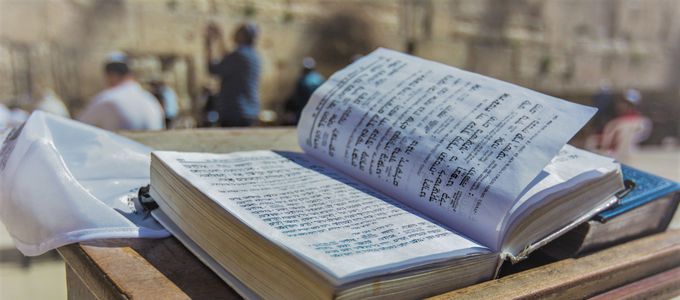
The Bible is not a book, there is no original, and the number of books is disputed. Yet, it is the best-preserved writing of antiquity and the most widely used book of all time. Here are ten facts you may or may not have known. Tomorrow, 23 April, is World Book Day.
The Bible is not a book, but more of a library. The collection consists of five to six dozen more or less extensive individual works. This is also reflected in its name “Bible”. The word comes from the Greek tà biblía (τὰ βιβλία), which means “the books”.
The Bible is named after a trading town. The ancient world wrote mainly on papyrus, on scrolls. The raw materials for this—a perennial plant by the name of Cyperus papyrus or the raffia obtained from it—have been traded since the sixth century, primarily in the Phoenician harbour city of Byblos. This gave rise to the term biblíon, meaning book or booklet.
The number of books in the Bible is disputed. Catholics recognise 73 books, while Protestants only recognise 66. The difference lies in the books that were found in the Bible of the early Christians (the Septuagint), but not in the collection of later Judaism (the Masoretic text), which the Protestant reformers based their translation on. Scholars no longer speak of the Apocrypha here, but of the later writings of the Old Testament.
Originally, the Bible was available in three languages. The Old Testament was predominantly written in Hebrew. Individual passages in the books of Ezra, Jeremiah, and Daniel were written in Aramaic. The New Testament has been handed down in Greek, but there are occasional quotations from Jesus in his mother tongue Aramaic. All three biblical languages differ significantly from their dialects that are spoken today.
There is no original of the Bible, but thousands of handwritten copies, so-called textual witnesses. The oldest document for the New Testament is the papyrus fragment P52 (around 125 AD) and contains parts of John 18. The Methuselah among the texts of the Old Testament is a silver scroll from the seventh century BC with the Aaronite blessing. And the oldest complete Bible is the Codex Sinaiticus from the fourth century AD.
The Bible is the best attested work of antiquity. Just for comparison, there are only five manuscripts of Aristotle’s work, with a gap of 1,400 years between the original and the earliest copy. Caesar’s On the Gallic War has a hundred copies with a minimum interval of nine hundred years. There are around five thousand direct manuscripts to the New Testament, the earliest of which were written around twenty-five years after the events they describe.
Chapters and verses were not part of the original Bible. The person credited with organising the Bible into chapters is the chancellor of the University of Paris, Stephen Langton (1150–1228), who later became archbishop of Canterbury. And the French publisher Robert Estienne created a verse numbering system in 1551 with an edition of the New Testament. The idea was taken from Jewish traditions of the Middle Ages for organising the Hebrew Bible.
The first printed book in the modern sense was a Bible. The Gutenberg Bible was created in 1452 and 1454 in the workshop of Johannes Gensfleisch, known as Gutenberg, in the city of Mainz in Germany. This book consisted of two volumes and comprised 1,282 pages with 42 lines each. While it was not the world’s first printed book, Gutenberg’s inventions laid the foundations for the technology still used today. He triggered a media revolution that allowed for the Bible to be printed in large numbers, sold cheaply, and to be distributed widely.
The Bible is the most widely distributed book in the world. With around five billion copies, the Bible is the best-selling and most widely distributed book of all. In 2022 alone, the Bible Societies distributed almost 36 million copies. In addition, there are seven million copies of the New Testament and almost 124 million extracts of at least 24 pages in length. Most copies were sold to Brazil (4.8 million), the USA (2.6 million) and India (2.5 million). Around 28 per cent of the Bibles distributed were digital editions that were downloaded from the internet—with an upward trend.
The Bible is the most translated book in the world. The Holy Scriptures have been translated into 3,600 languages. This is what the statistics from the World Federation of Bible Societies say. This means that 6.4 billion people can read the Bible in their own language, a further 850 million can read the New Testament, and 500 million can read at least one of the biblical books. 250 million people do not have any biblical scriptures in their mother tongue. The aim of the global organisation is to translate the Bible into a further 1,200 of the 3,776 still missing languages by 2038.
Photo: Sergey Novinzon




